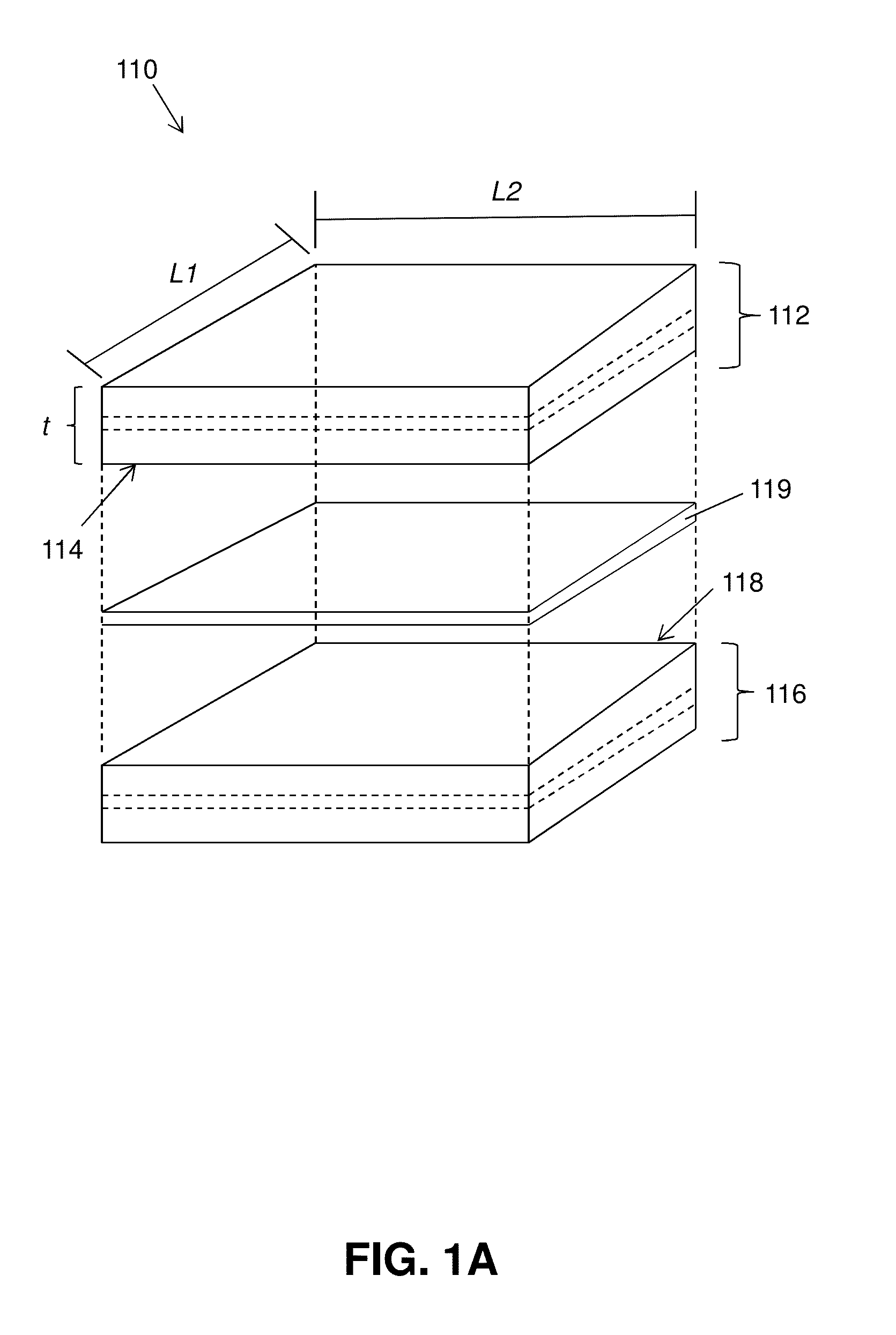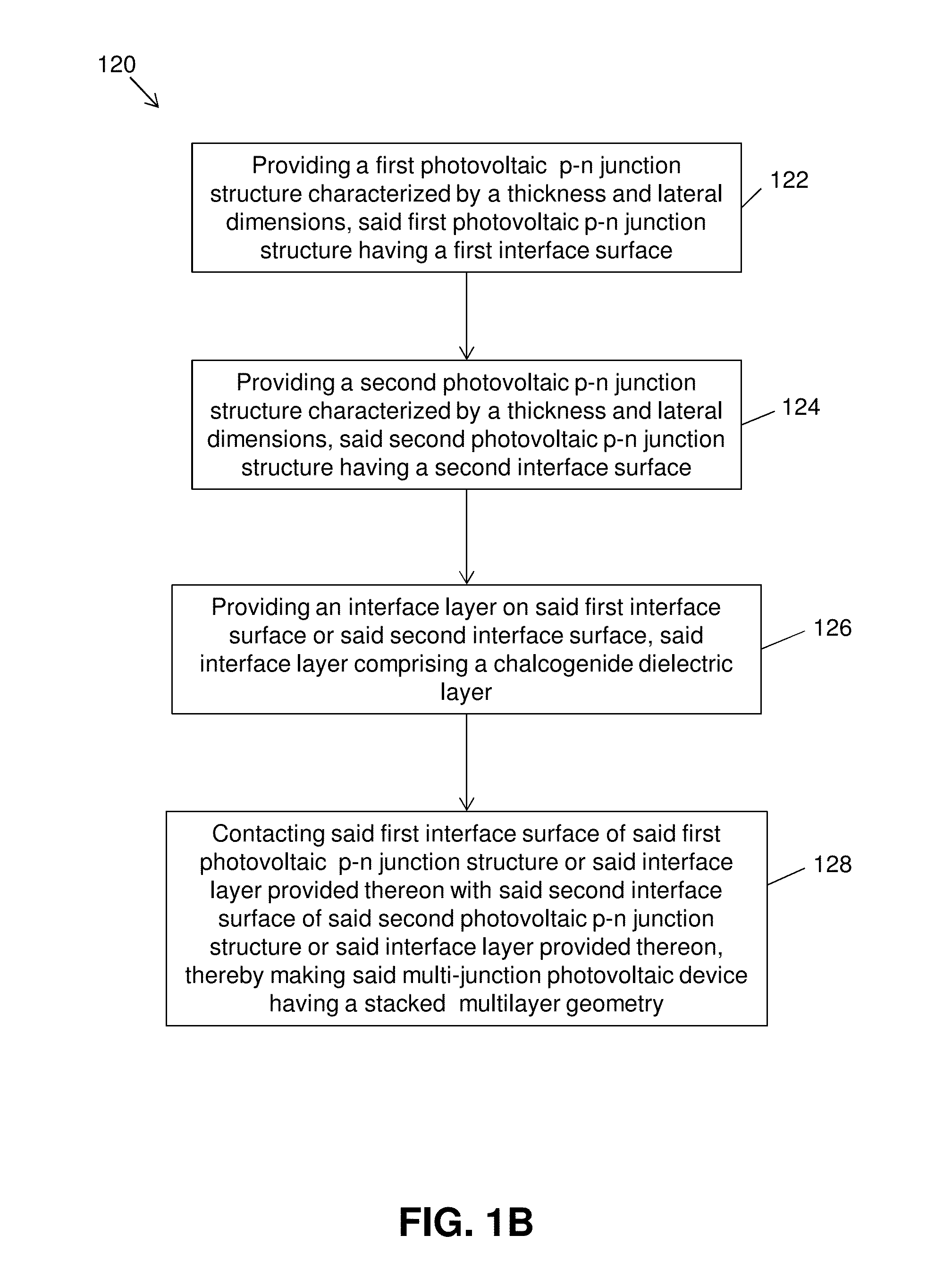Printing-based assembly of multi-junction, multi-terminal photovoltaic devices and related methods
- Summary
- Abstract
- Description
- Claims
- Application Information
AI Technical Summary
Benefits of technology
Problems solved by technology
Method used
Image
Examples
example 1
Printing-Based Assembly of Quadruple Junction, Four-Terminal Microscale Solar Cells and Their use in High-Efficiency Modules
[0139]Expenses associated with shipping, installation, land, regulatory compliance and on-going maintenance / operations of utility-scale photovoltaics suggest that increases in solar-to-electrical conversion efficiencies will drive cost reductions1. Advancements in light management are the primary determinants of higher PV efficiencies2-4. Single-junction cells have performance constraints defined by their Shockley-Queisser limits5. Multi-junction (MJ) cells6-12 can achieve higher efficiencies, but advances are limited by requirements in epitaxial growth and current-matching. Mechanically stacked MJ cells13-19 circumvent these disadvantages, but existing approaches lack scalable manufacturing processes and suitable interfaces between the stacked cells. This example presents materials and strategies designed to bypass these limitations. The schemes involve (1) pr...
example 2
Device Architectures for Enhanced Photon Recycling in Thin-Film Multifunction Solar Cells
Abstract
[0205]Multijunction (MJ) solar cells have the potential to operate across the entire solar spectrum, for ultrahigh efficiencies in light to electricity conversion. This example presents an MJ cell architecture that offers enhanced capabilities in photon recycling and photon extraction, compared to those of conventional devices. Ideally, each layer of a MJ cell should recycle and re-emit its own luminescence to achieve the maximum possible voltage. The present design involves materials with low refractive indices as interfaces between sub-cells in the MJ structure. Experiments demonstrate that thin-film GaAs devices printed on low-index substrates exhibit improved photon recycling, leading to increased open-circuit voltages (Voc), consistent with theoretical predictions. Additional systematic studies reveal important considerations in the thermal behavior of these structures under highly ...
PUM
 Login to View More
Login to View More Abstract
Description
Claims
Application Information
 Login to View More
Login to View More - R&D
- Intellectual Property
- Life Sciences
- Materials
- Tech Scout
- Unparalleled Data Quality
- Higher Quality Content
- 60% Fewer Hallucinations
Browse by: Latest US Patents, China's latest patents, Technical Efficacy Thesaurus, Application Domain, Technology Topic, Popular Technical Reports.
© 2025 PatSnap. All rights reserved.Legal|Privacy policy|Modern Slavery Act Transparency Statement|Sitemap|About US| Contact US: help@patsnap.com



